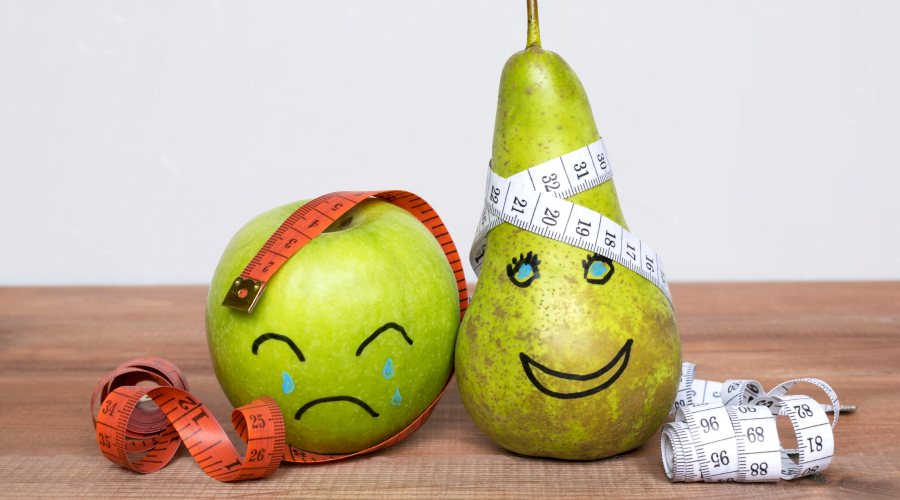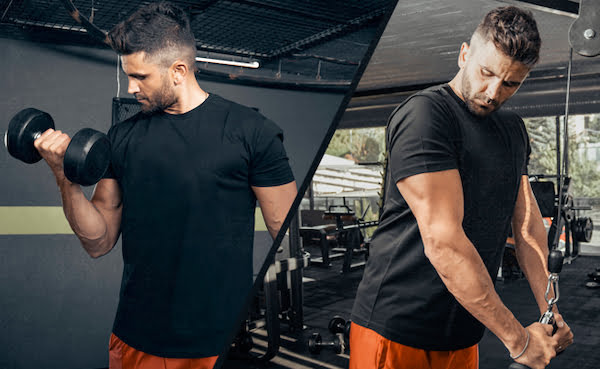Losing body fat is a troublesome task. But not if your diet plan and exercise regimen are in sync with your body type! Science suggests that each individual is born with a natural body type. The body type correlates with physical strengths and weaknesses, personality characteristics, and behavior. A customized body type diet and fitness training can thus enhance results. Gauge your body shape by reading about the different body shapes.
What Are The Different Body Types?
Body type generalises body shape depending upon body composition. They are categorised into three main somatotypes – endomorph, mesomorph, and ectomorph. A person can be an ectomorph, mesomorph, or endomorph depending upon the body fat, bone, and muscle mass they hold.
- Ectomorph – People with thin, narrow, delicate, and fragile physiques have an ectomorph body type. They are linear and poorly muscled with narrow shoulders and hips in comparison to their height. Such people have a naturally fast metabolism and therefore face difficulties in gaining muscle mass.
- Mesomorph – People with mesomorph body types are broad-shouldered with a narrow waist and hip. They have a muscular, compact, and athletic build-up. They have an effective metabolism and therefore both weight gain and weight loss can happen easily with conscious effort.
- Endomorph – People with this physique are soft, round, pudgy, and overweight. They have bulky bones with a predominant midsection and hips. They have a slow metabolism and therefore carry large amounts of accumulated fats.
How To Identify Your Body Type?
Here’s a quick quiz to help you identify your body shape and type.
Q1. Which of the following is more dominant in your body?
- Bone
- Muscle
- Fats
Q2. What’s the ratio between your shoulders and hips?
- Shoulders are narrower than hips.
- Shoulders and hips are of the same size.
- Shoulders are wider than the hips.
Q3. What best describes your body shape?
- Pencil
- Hourglass
- Pear
Q4. What happens when you encircle your wrist with the middle finger and thumb of the other hand?
- Middle finger and thumb overlap.
- The middle finger and thumb barely touch each other.
- There remains a gap between the middle finger and thumb.
Q5. What’s your weight gain pattern?
- Have trouble gaining weight and body fat.
- Can gain and lose weight without much difficulty.
- Can gain weight easily but have problems losing it.
Q6. What would happen if you stop exercising?
- Lose muscle mass and strength quickly.
- Things will not change much.
- Will begin to gain weight.
Q7. What happens after a full-carb diet?
- Feel normal and good.
- The belly feels full and the abs muscles are hard to touch.
- Feel tired and bloated after meals.
Q8. What’s your bone structure?
- Small frame
- Medium frame
- Large frame
Result – Add the number of times you have answered 1, 2 or 3. Interpret the result as follows:
- Mostly 1’s – Ectomorphs
- Mostly 2’s – Mesomorphs
- Mostly 3’s – Endomorphs
Some people may also have a combination body type, also known as a hybrid body type. These are:
- Ecto-Mesomorphs – In case the answers are split between 1’s and 2’s. This body type is lean and muscular.
- Meso-Endomorph – In case the answers are split between 2’s and 3’s. This body type is strong but the muscles are not well-defined.
- Ecto-Endomorph – In case the answers are split between 1’s and 3’s. This body type is naturally thin and the weight gain is linked to unhealthy eating habits and lack of exercise.
Eating For Your Body Type
Healthy eating habits are the sine qua norm for good health. But within the healthy food spectrum, closely calculating the macronutrient profile holds the key to better health and enhanced performance. Here’s more about your body type diet:
Body Type Diet – Ectomorph Diet
People who are ectomorphs or have a hybrid ecto-type body type like ecto-mesomorphs or ecto-endomorph must rely on low-fat diets. Ectomorphs respond well to carbohydrates. So include plenty of healthy sources of carbohydrates like fibre-rich fruits, veggies, and whole grains. One can also add plenty of plant-based and animal-based protein sources to aid the muscle-building effort. Approximately 50% of calories must come from carbs, 25% from protein and 25% from fat.
Read the full article here.



